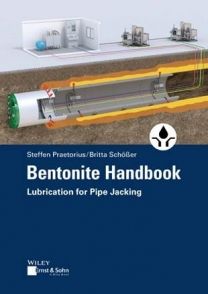Latest news
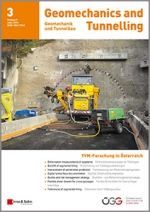
Geomechanics & Tunnelling 03/2016
"[...] The ÖBB-Infrastruktur AG initiated a TBM research project in 2012 with the involvement of consultants, university institutes, contractors and machine manufacturers, supported by experience from completed tunnel drives with tunnel boring machines (TBM) in Austria. The objective was and is to develop an understanding of all processes of TBM tunnelling, as is already available for NATM tunnelling, in order to generate the greatest possible technical and benefits of on mechanised tunnel drives.
In this issue, we have picked out a few subjects, which should give an insight into the wide range of progressive approaches and innovations. Several new developments could already be successfully tested in practice on the running TBM drives on contract KAT2 of the Koralm Tunnel. The development and construction of a segment test rig at the Montanuniversität Leoben, which is reported by Gehwolf et al, is certainly unique in Austria. In the course of this work, a fibre optic system to measure deformation in segments has been successfully applied. [...]"
Taken from the editorial of Geomechanics & Tunnelling 03/2016. Read full article on WileyOnlineLibrary.
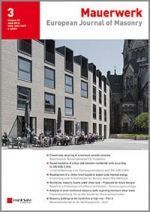
European Journal of Masonry 03/16
An Editorial by Torsten Schoch, "[...] Masonry in a world of challenges: Although this motto may sound a bit exaggerated to one or the other, it can be seen as reasonable and prudent in this issue of the journal. The first article in this issue offers answers to the frequently encountered question, what to do with the masonry after the demolition of the building. [...] The objective is to produce and implement technologically and economically feasible products in order to relieve landfill sites and ensure a closed material cycle in the future if possible. This is still far away. [...]"
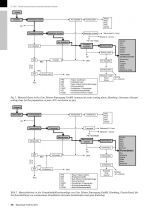
Closed-loop recycling of autoclaved aerated concrete
Xella Technology and Research, in a pilot study with the Hamburg-based Otto Dörner GmbH waste management company and the Ytong plant in Wedel, has been testing since 2013 how and in what amounts autoclaved aerated concrete (AAC) remains from demolished buildings or from waste disposal sites can be reused for new AAC production. The processing of the salvaged AAC-material should conform to the current technical standard: return of mixed demolition rubble, separation of contaminants (by metal separation, air density separation, swim-sink separation, manual resorting), pre-treatment in the crusher and sieves for predetermined grain size ranges. This is where grain sizes or moisture content, heavy metals, bitumen, sulphate or other impurities are analysed in detail. The sorting accuracy as performed by Otto Dörner has shown to be sufficient for reuse through reintroduction into AAC-production. Up to 15 % salvaged AAC prepared in such a manner can be effortlessly reused. A sample production of AAC quality grade P4-0.55 with granulated salvaged AAC in the Ytong plant in Wedel was successful.
Continue reading this article on Wiley Online Library for free.
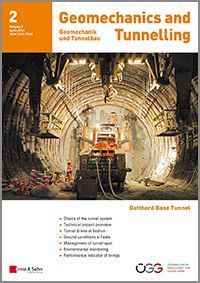
The Construction of the Gotthard Base Tunnel
The Gotthard Base Tunnel is with a length of 57.09 kilometres, the longest and deepest railway tunnel in the world. The tunnel boring machines were as long as four football fields laid end-to-end with a cutterhead diameter from 8.8 to 9.55 metres. Issue 2/2016 of our journal Geomechanics and Tunnelling is dedicated to the construction of the recently opened tunnel.

Just this week!
Ernst & Sohn is offering a discount on selected English books.
You can take advantage of 20% off the regular price for all orders until 30th June, 2016.
IMPORTANT: Order code is EUS20
Click here for the book selection

New publications summer 2016
New publications from the areas: steel construction and geotechnical engineering.
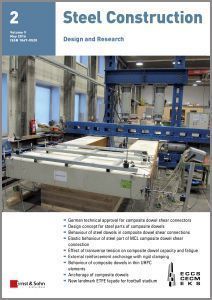
Steel Construction 02/16
Bridge construction – a strong driving force for developments in composite construction
An editorial by Dr. Günter Seidl:
"The public often falsely assumes that the construction industry is not very innovative, is technologically out-dated. This is mostly caused by indicators such as research intensity or number of patents used for statistics to measure innovation growth and productivity increases. Construction companies mostly use innovations from supplying construction material fabricants and employ dynamic developments from the mechanical engineering industry. [...]"
Read the entire editorial
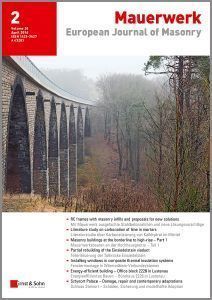
European Journal of Masonry 02/16
The arched viaduct at Einsiedelstein near the Wermelskirchen junction between Leverkusen and Wuppertal was originally built in 1938 and has now been rebuilt with a new carriageway deck as part of the six-lane widening of the Federal Autobahn A1. GRASSL Ingenieure performed the necessary structural recalculation of the bridge structure for the actions according to DIN Specialist Report 101 “Actions on Bridges” as well as the design for construction (see also the article on pp. 147–159).
(photo: © wilfried-dechau.de, design and structural design: www.grassl-ing.de)
Order a free sample copy of European Journal of Masonry.

Geomechanics and Tunnelling 02/16
The tunnel drives in the section Sedrun had among others to pass the major fault zone of the Tavetsch Intermediate Massif. In order to cope with the expected high radial deformation special equipment and yielding support elements were used. The overlapping TH-profiles were mounted to a ring using a 54 t support machine.
Order a free sample copy of Geomechanics and Tunnelling.
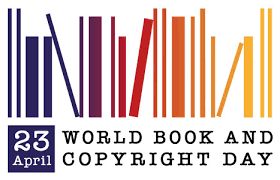
World Book and Copyright Day
On 23rd April in over 100 countries around the world books and reading are celebrated: book shops, publisher, libraries, schools and voluntary organisations contribute to the UNESCO World Book and Copyright Day. (source: www.un.org/en/events/bookday)
For Ernst & Sohn as publisher for civil and structural engineering that is a reason to give you some background on this special day of the year and to offer you a little present.


